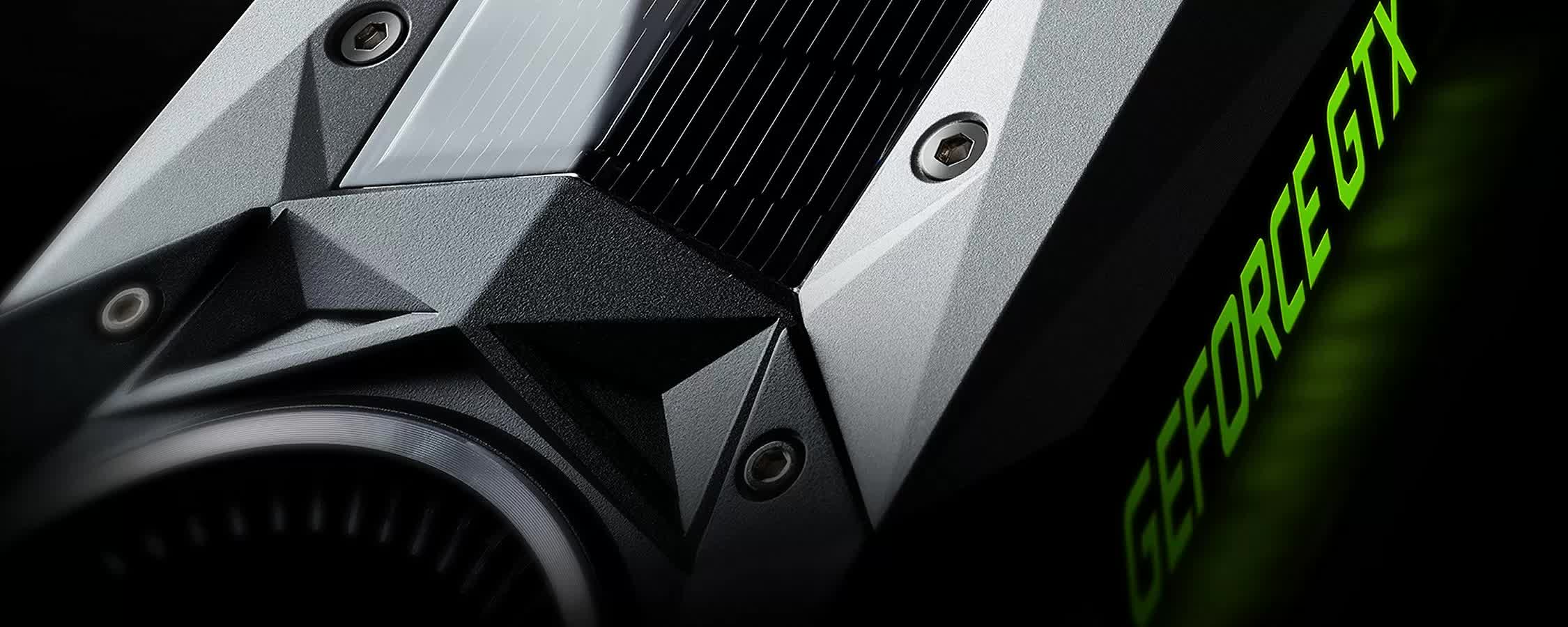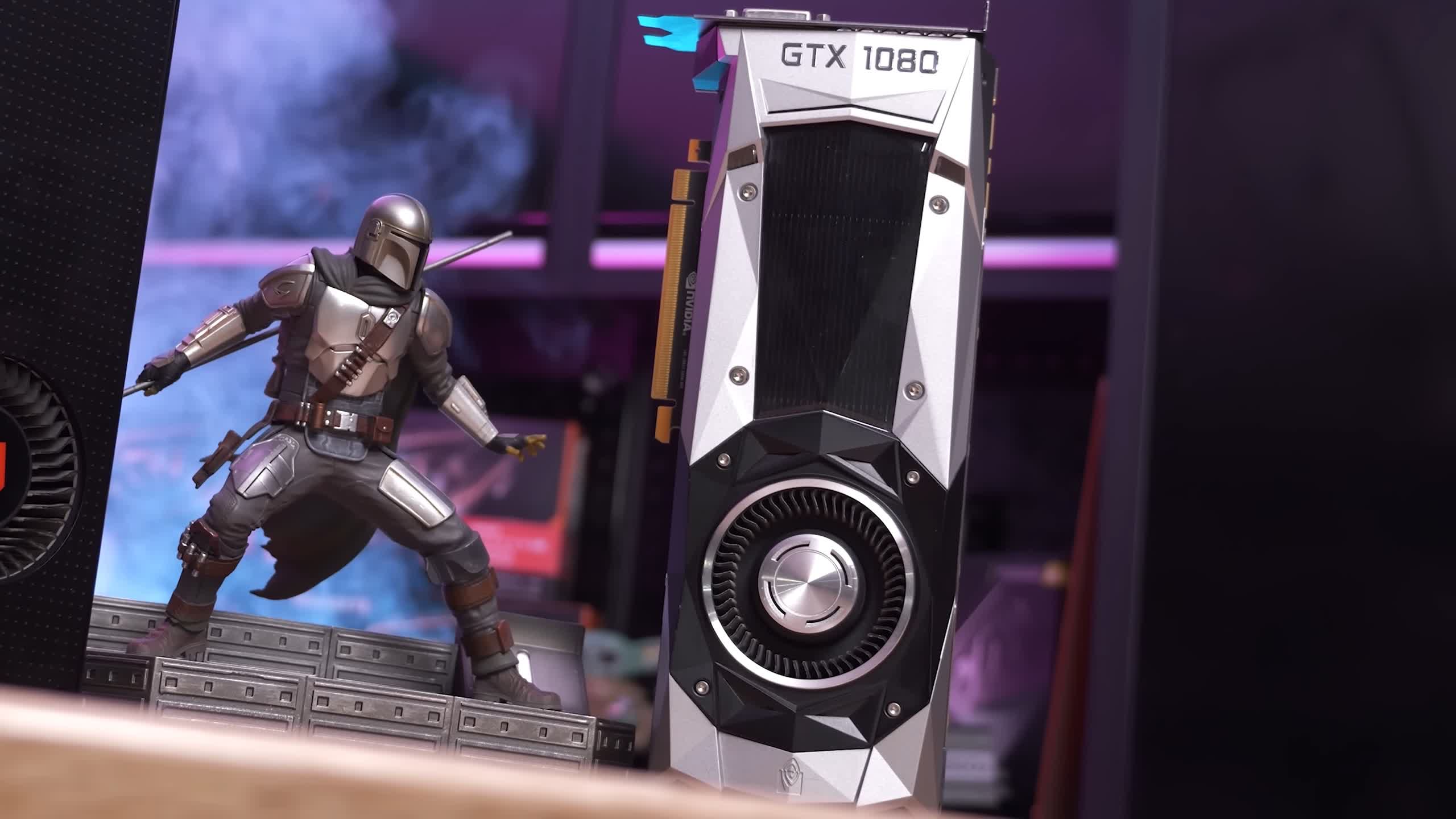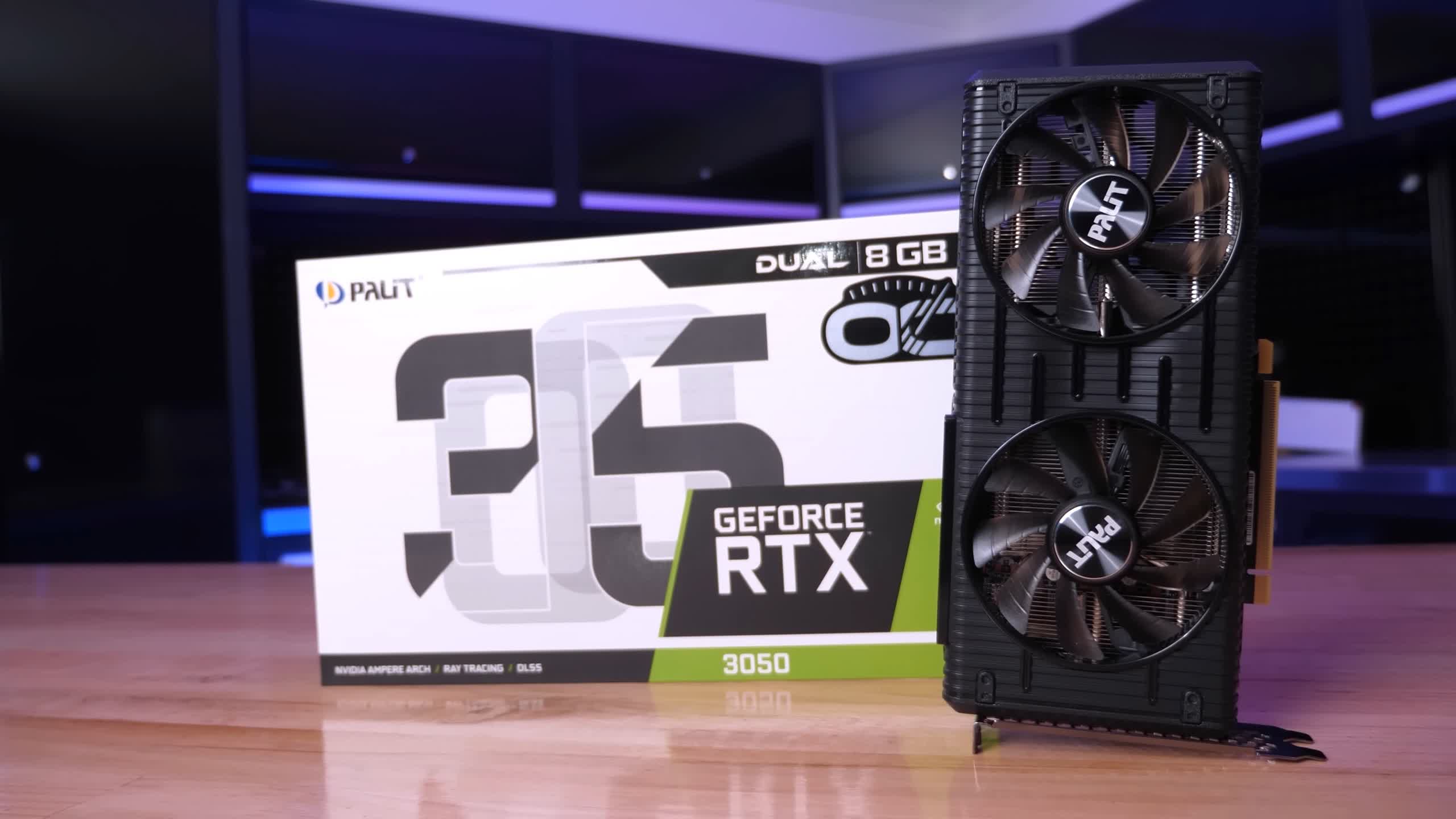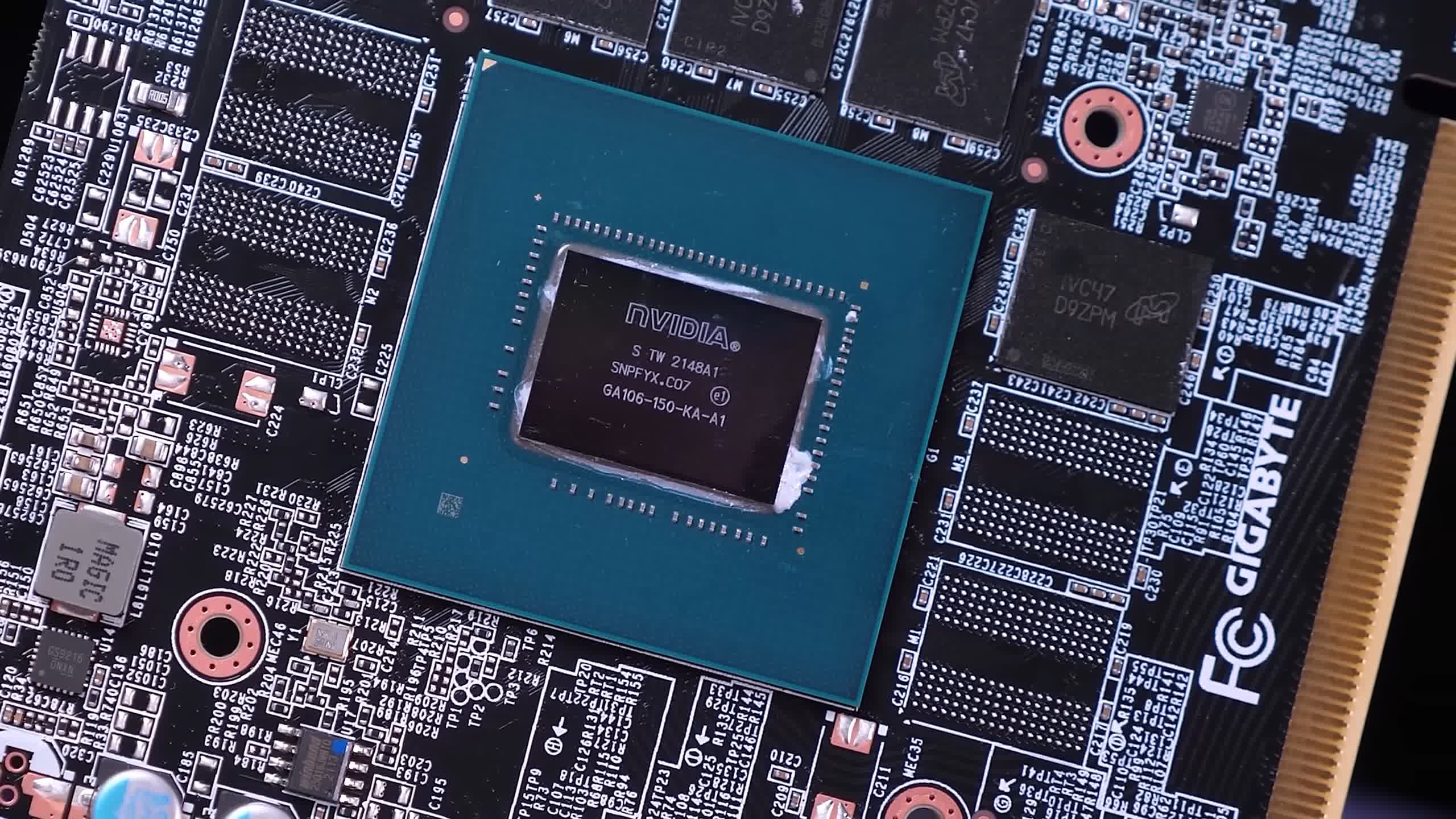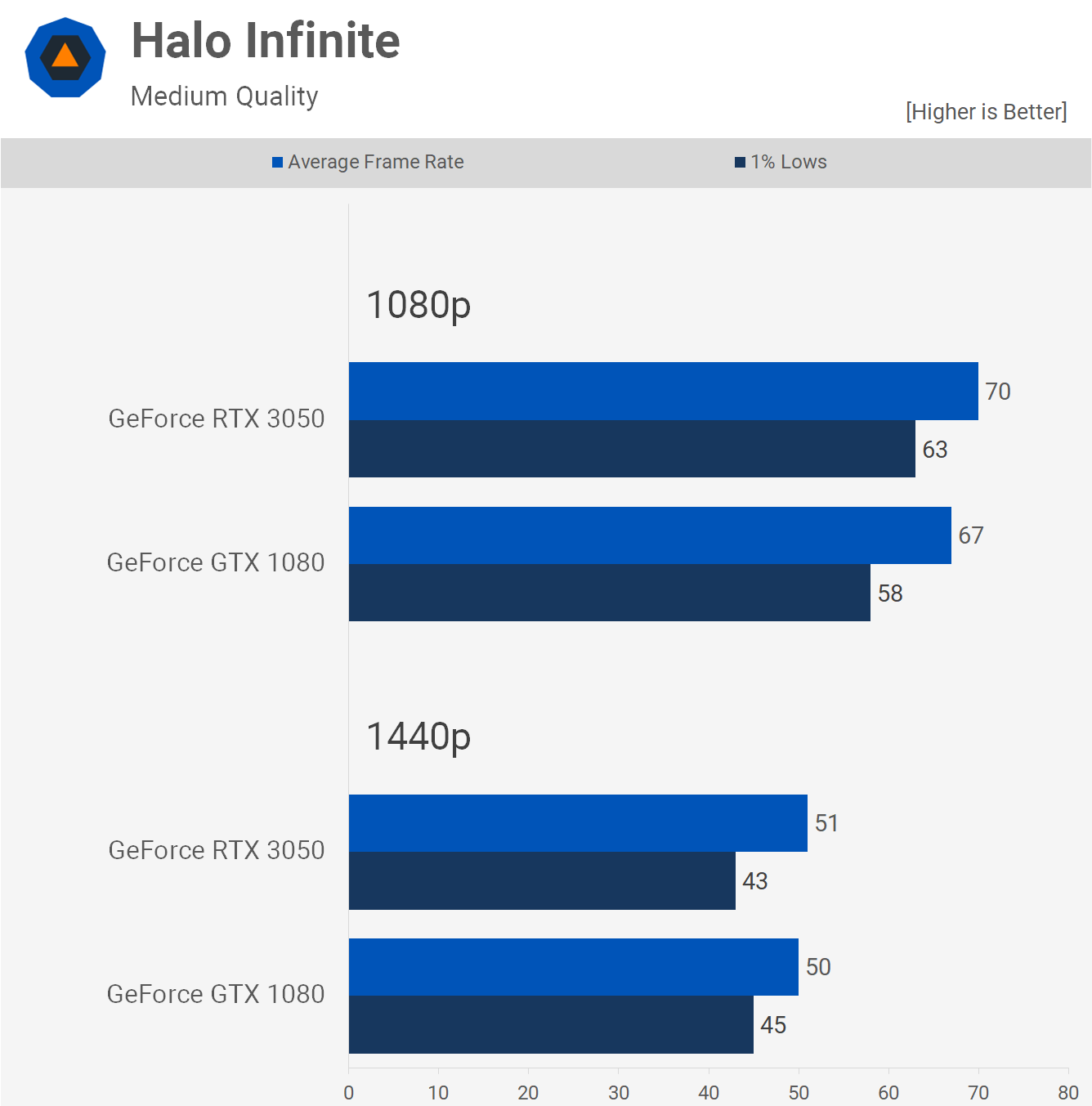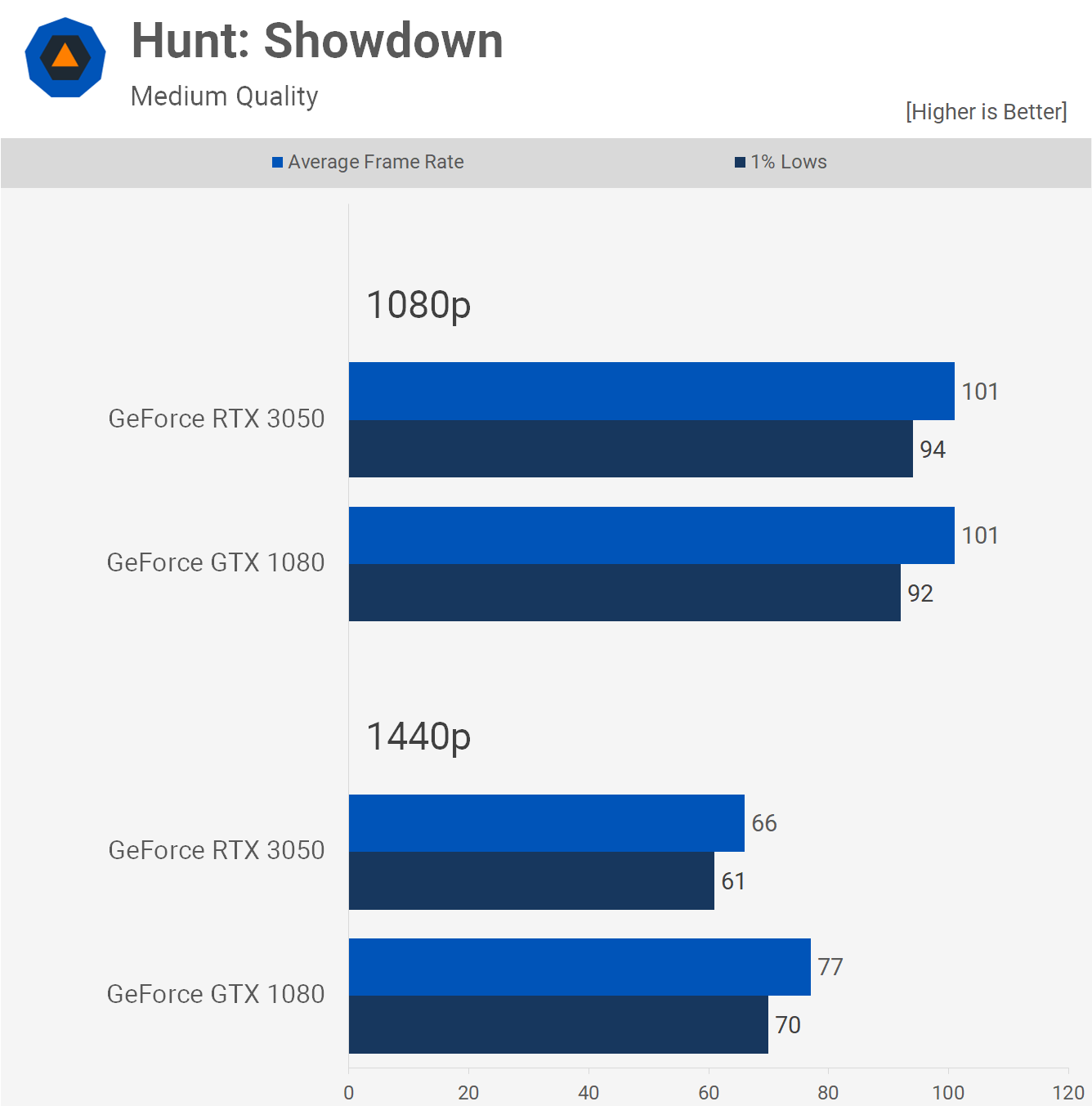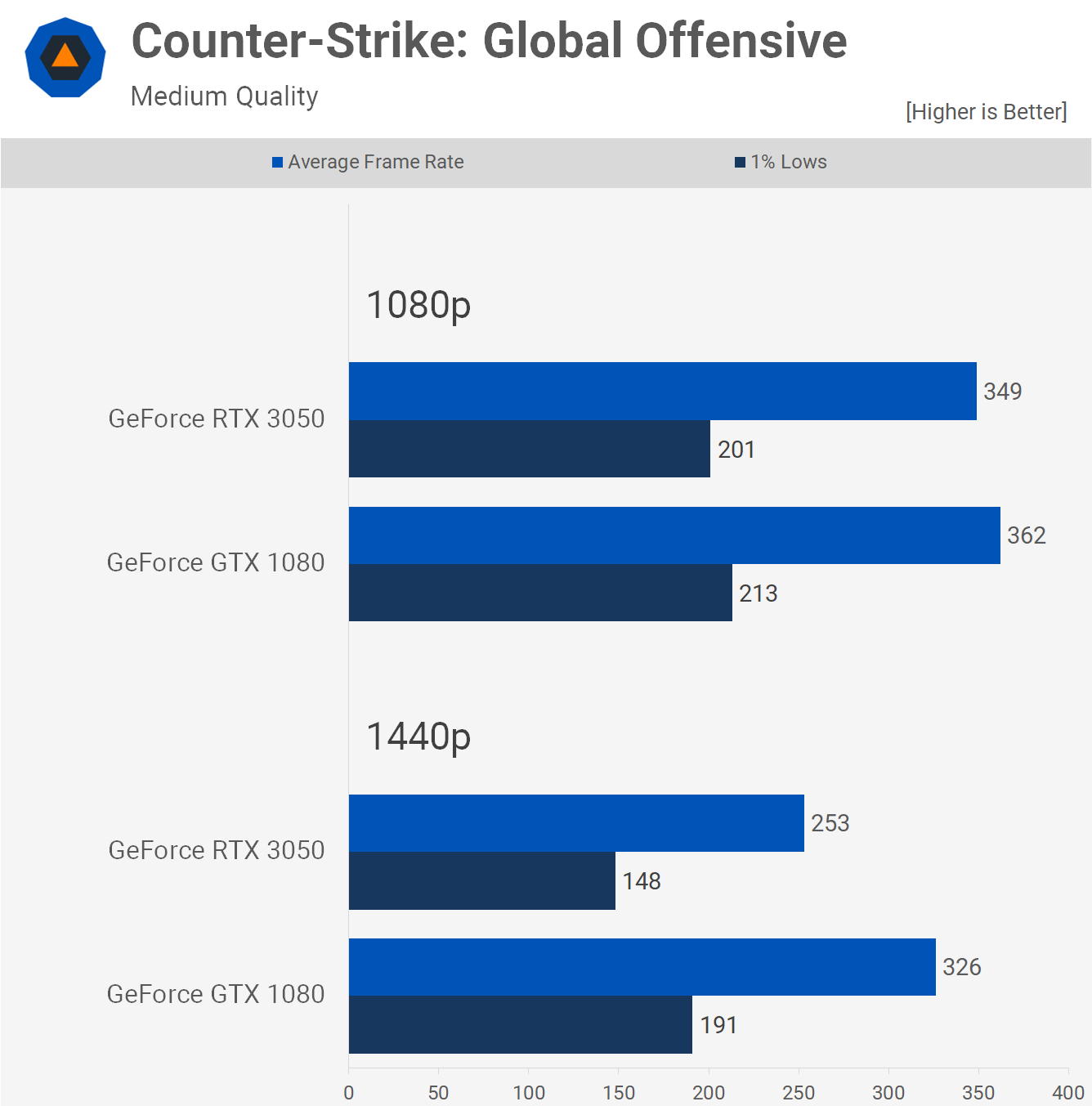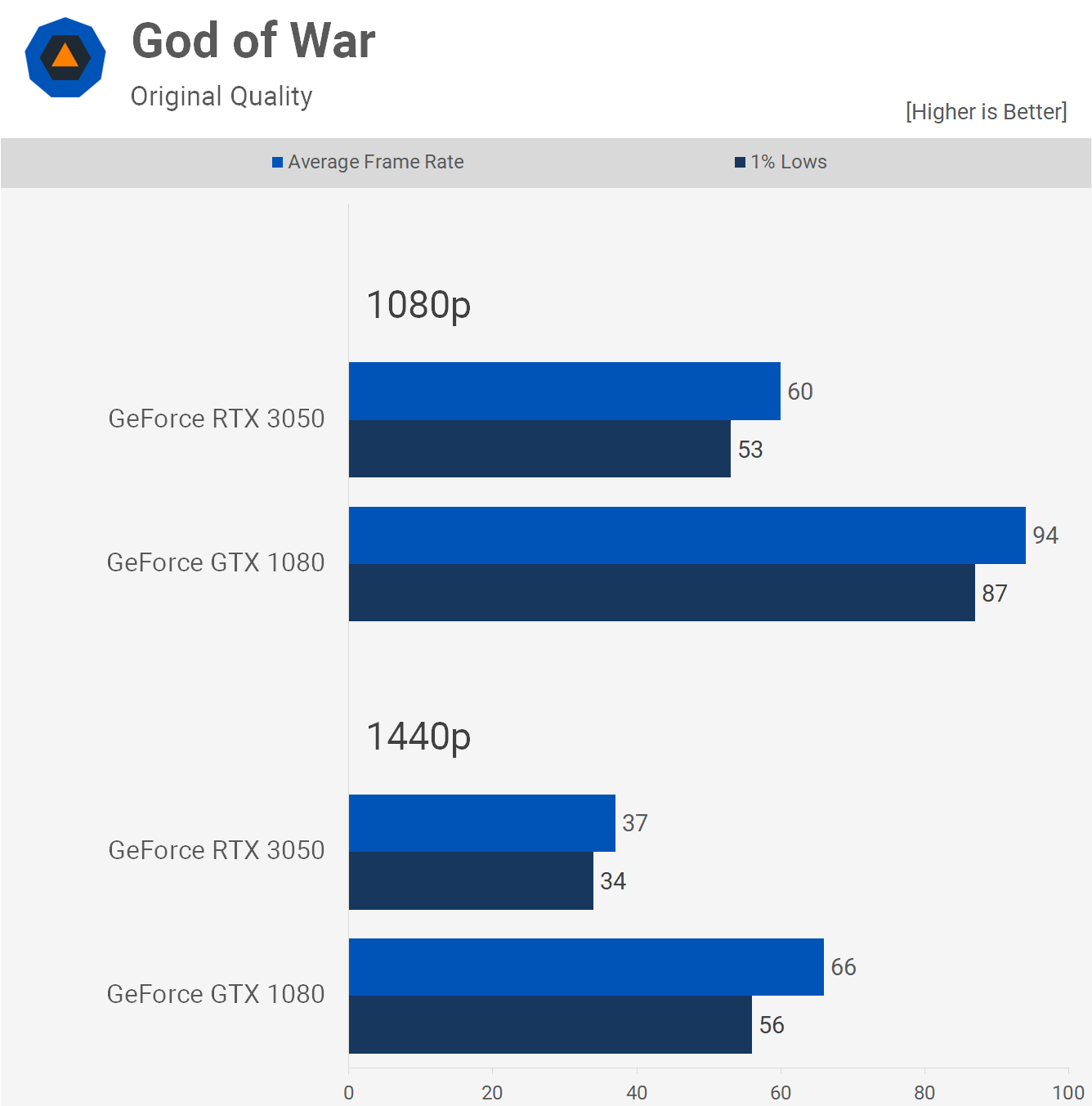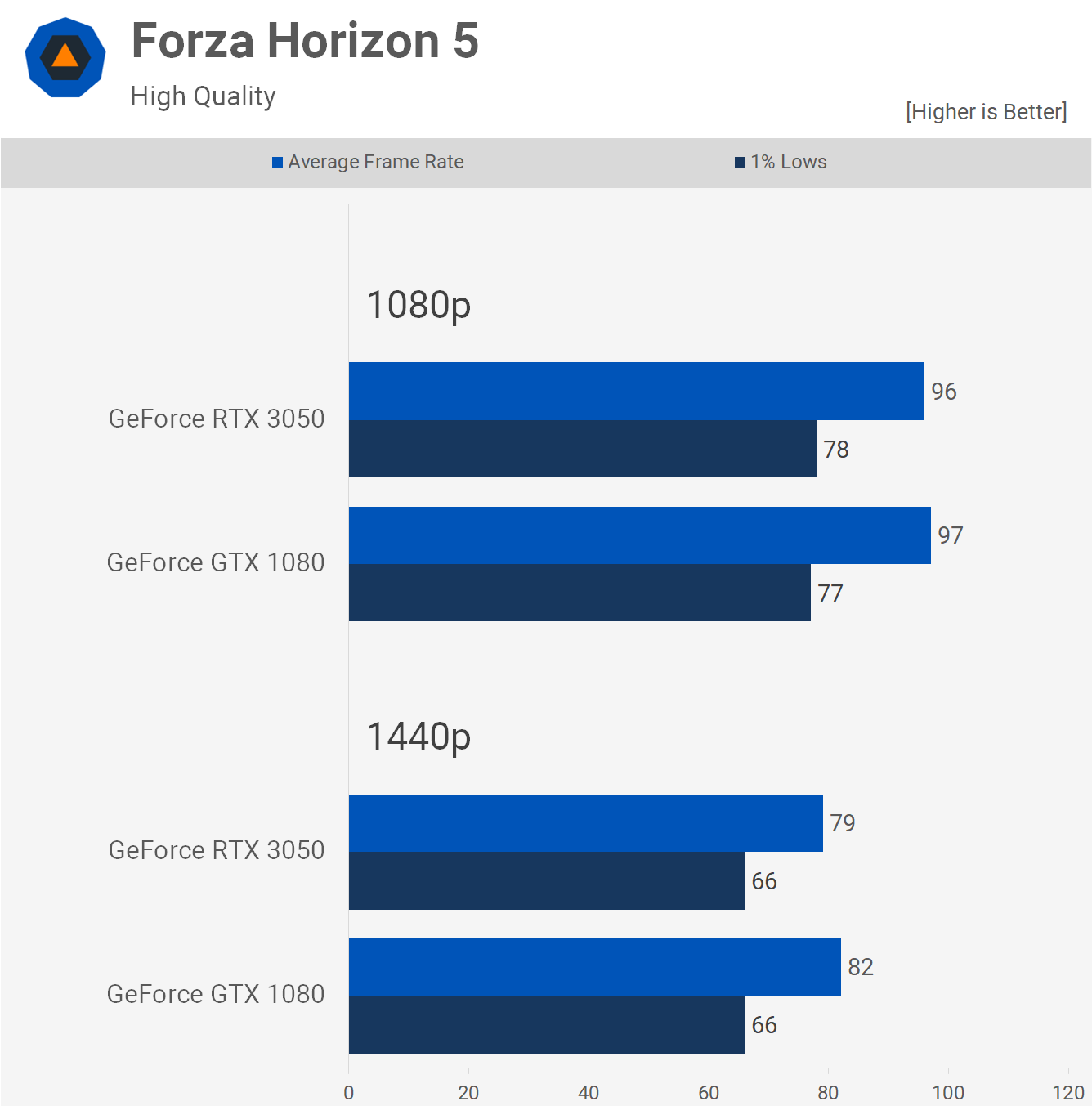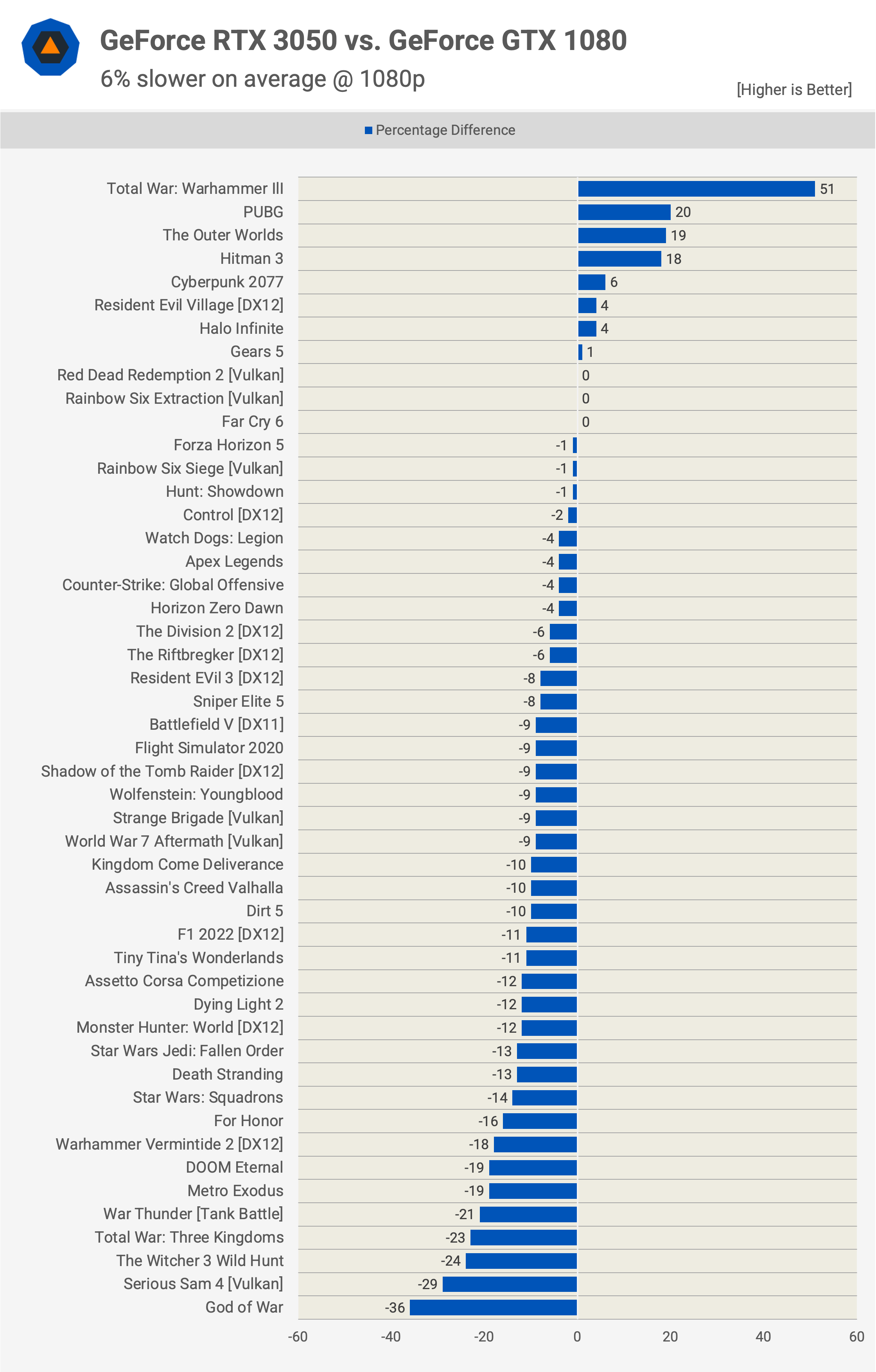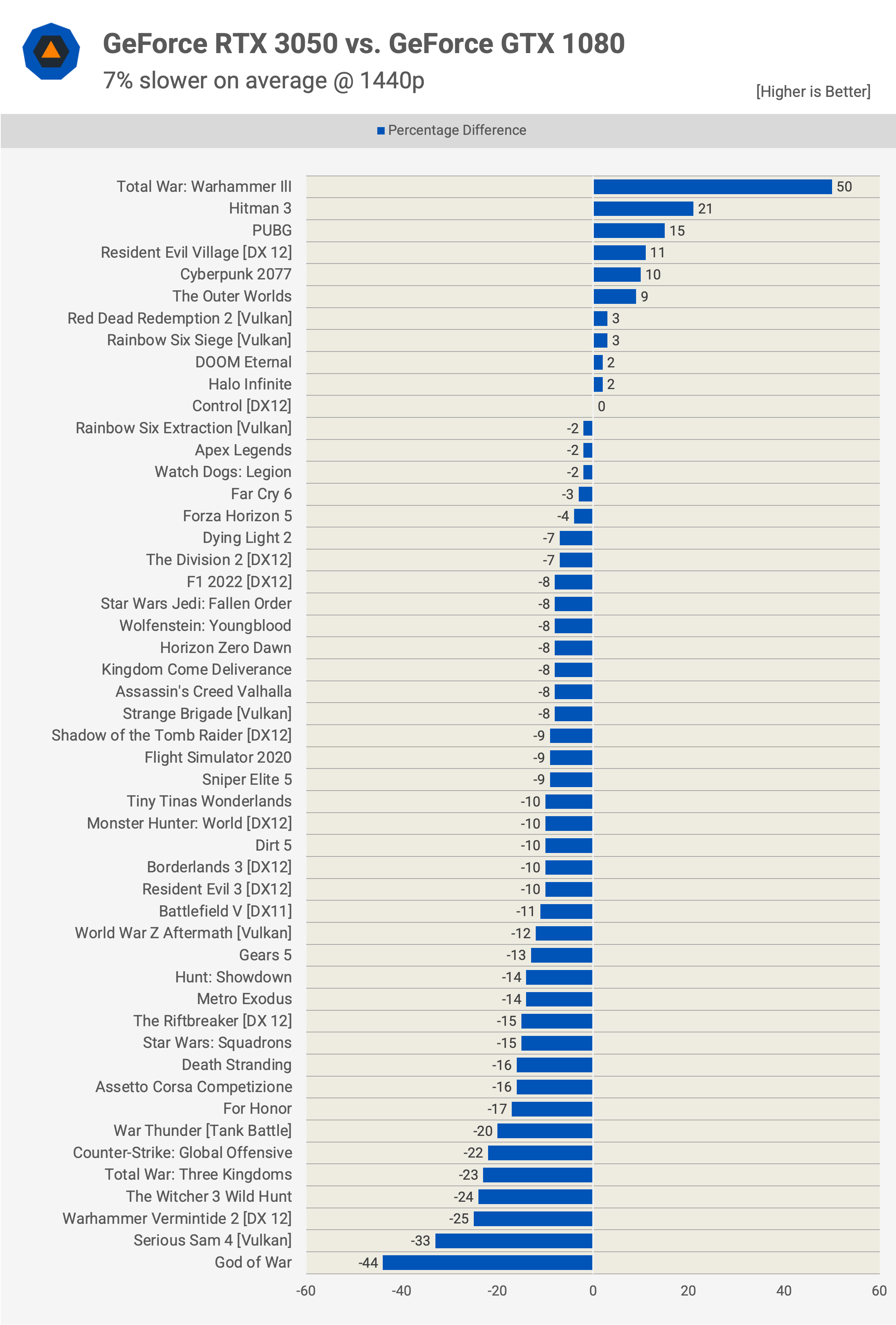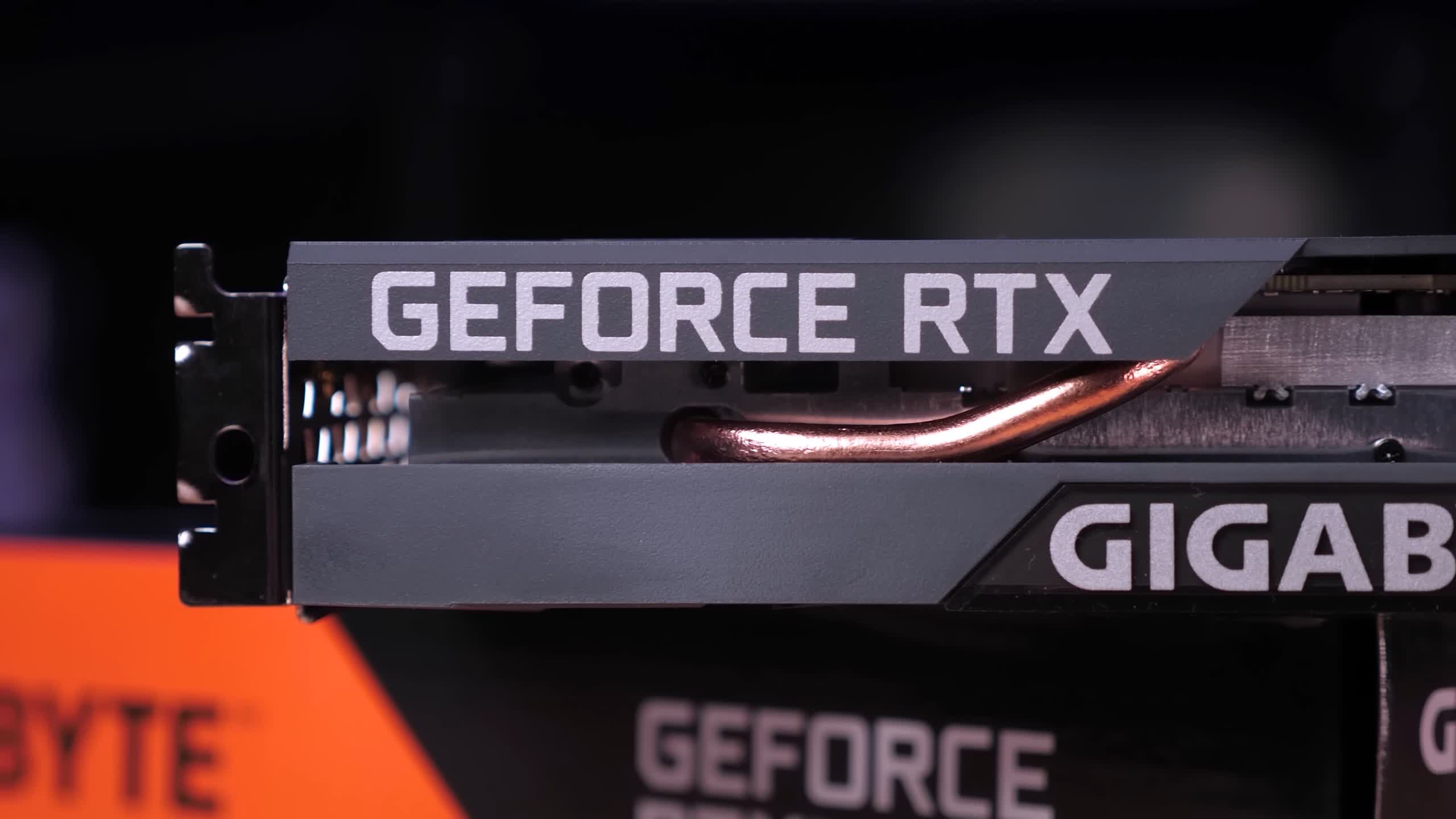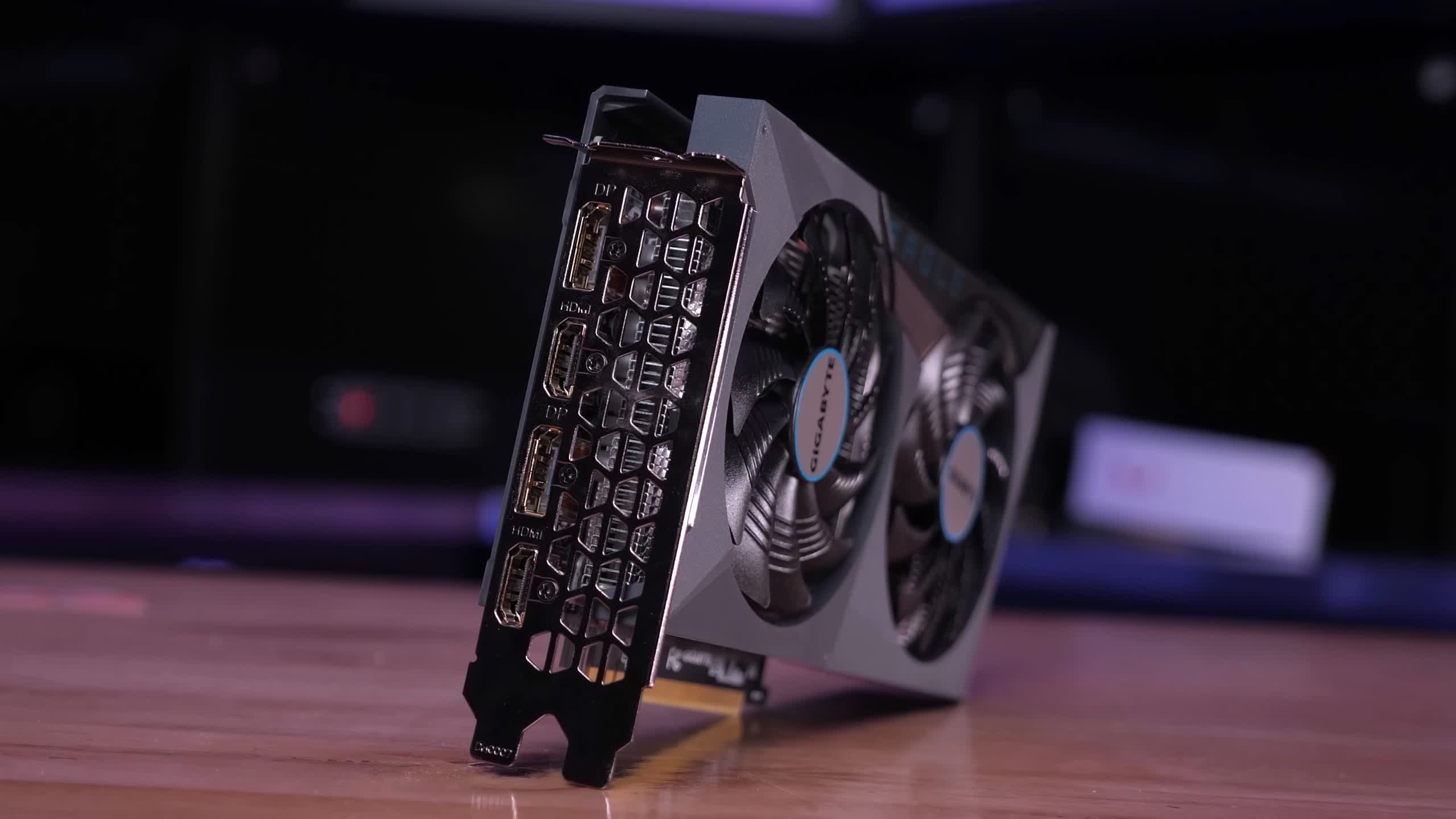In a recent feature we titled "2016 Flagship GPU vs 2022 Budget GPU," we revisited the old GeForce GTX 1080 to see how Nvidia's 2016 high-end Pascal GPU stacked up in 2022, and because the Radeon RX 6600 is one of the very few GPUs we can really recommend right now – it can be had for as little as $260 – we thought that could be an interesting matchup.
The comparison did not favor the venerable GeForce though as the much newer Radeon was on average 20% faster at 1080p and 14% faster at 1440p. Still, it was impressive to see that after six years the GTX 1080 remains a capable graphics processor, even if it's not something you should be on the lookout for on the used market.
This got us thinking though. Seeing that GTX 1080s generally sell for ~$200 used, or around what you'd pay for a used Radeon 6600, how does the newer GeForce RTX 3050 compare in all this?
To quickly recap, the GeForce GTX 1080 was released back in 2016 (when we gave it a perfect 100 score, no kidding) for $600 before dropping to ~$500 the following year. That means that six years later the RTX 3050 arrived at half that price, or at least it was meant to be according to the official $250 MSRP (you know, GPU shortages and inflation of yesteryear).
In reality, the RTX 3050 never became available at that price and even today it costs at least $300, so half the price of the original GTX 1080 MSRP, so let's go with that. After many years and multiple GPU generations, can 2022's $300 GeForce GPU beat 2016's $600 GPU?
On paper it's an interesting match up. Comparing CUDA core count is pointless, though they both pack 2560, but the GTX 1080 has 100% more texture mapping and render output units. The GTX 1080 might only use GDDR5X memory whereas the RTX 3050 has moved to GDDR6, but with half the memory bus width, the budget Ampere processor actually has less memory bandwidth at 224 GB/s opposed to 320 GB/s, which is a massive 30% reduction there.
Processing power is roughly the same though, and the RTX 3050 benefits from hardware support for technologies such as async compute and DirectX 12, and of course, by using Nvidia's most recent architecture, it gets better driver optimization.
For testing we're using our Ryzen 7 5800X3D test system using 32GB of DDR4-3200 CL14 memory along with the latest available display drivers. Resizable BAR has been used for all 50 games we tested at 1080p and 1440p. We'll take a close look at the data for about a dozen of the titles before jumping into the usual breakdown graphs.
Benchmarks
Starting with the Hitman 3, we find that the RTX 3050 was 18% faster at 1080p and 21% faster at 1440p, some seriously large performance gains for the newer Ampere GPU. That said, this is a very poor showing for the GTX 1080 as we saw it doing poorly relative to the RX 6600 and Vega 64 in previous tests, so we're not expecting these margins to be the norm.
Another bad title for Pascal is Warhammer III, where the GTX 1080's performance is horrible, averaging just 42 fps at 1440p. The RTX 3050 was roughly 50% faster at both tested resolutions and we believe this is partly due to the lack of async compute at the hardware level on the GTX.
Next we have War Thunder, which is an old game that's still very popular today, and you'd expect a fairly good level of optimization for Pascal for this one. That certainly appears to be the case as the GTX 1080 was almost 30% faster at both tested resolutions.
Moving on to Rainbow Six Siege, we find competitive performance between the two GeForce GPUs and both are certainly more than fast enough to enjoy this title, even in a competitive setting.
The 1% lows of the newer RTX 3050 were more consistent, but overall the experience was still good with the GTX 1080.
Another game where the RTX 3050 performs well relative to the GTX 1080 is Cyberpunk 2077, delivering around 10% more performance at both tested resolutions. We suspect driver support for Pascal is at a decent level for this massively hyped release, and instead the GTX 1080's shortcomings here are down to the aging Pascal architecture.
Death Stranding is a few years old at this point, so the GTX 1080 wasn't that old when it was released. Therefore it's not that unsurprising to see the RTX 3050 being outpaced with the GTX 1080 enjoying a 15% performance advantage at 1080p and almost a 20% advantage at 1440p.
F1 22 is a new game and yet the GTX 1080 still managed to get the better of the RTX 3050, offering 12% greater performance at 1080p and 9% at 1440p. That's an impressive result for the old Pascal graphics and F1 fans who invested in one 5-6 years ago would no doubt be very pleased, should they still be using it to this day.
For race sim fans, the GTX 1080 is still very much alive and kicking and certainly more capable than the RTX 3050 as it was 14% faster at 1080p and then a rather massive 19% faster at 1440p. A clear victory here for older technology, when a modern $300 GeForce GPU is struggling to take out the old gun.
Halo Infinite is a new game and it's an example where the RTX 3050 is able to fight the GTX 1080, beating it by a slim margin at 1080p and then matching it at 1440p.
The Hunt: Showdown results are interesting, both GPUs delivered the same 101 fps at 1080p, but the Pascal GPU took over at 1440p offering 17% more frames and we'd put this difference down to memory bandwidth.
We've seen a few times that the GTX 1080 fare better at a higher resolution since it enjoys a 30% bandwidth advantage, that makes sense.
Counter-Strike Global Offensive is another classic, so unsurprisingly the GTX 1080 performs well here. The 1080p results look a bit system limited, but once we get to 1440p it becomes more GPU limited and again the superior bandwidth of the GTX 1080 gives it a clear advantage, in part allowing for up to 29% greater performance.
The God of War performance is tragic for the RTX 3050. Just 60 fps at 1080p, making the GTX 1080 57% faster and then 78% faster at 1440p. Given this is a new title, at least for PC, you'd probably have expected the RTX 3050 to do a lot better, at least matching the old GTX 1080, but apparently not.
Forza Horizon 5 results in a tie at both tested resolutions. The GTX 1080 was a few frames faster but it's close enough to call a tie and both GPUs delivered highly playable performance using the "high quality" preset, so a good result overall.
Performance Summary
It's hard to say conclusively how these two GPUs compare based on the sample of games we just looked at. Sometimes the RTX 3050 was much faster, other times much slower, and what seemed like half the time, they were about the same.
Still we have tested a total of 50 games, so let's check out the full breakdown...
At 1080p we see that overall the RTX 3050 was actually 6% slower than the GTX 1080, and that's a very disappointing result. There was a small selection of games where the newer Ampere GPU was faster and while it was much faster in a few instances, it was much slower in many more.
There were just 14 games where the margins were 5% or less in either direction, with 20 where the RTX 3050 was slower by a 10% margin or greater. So overall, in 2022 the GTX 1080 is still the superior product in terms of gaming performance, coming out on top far more often.
When we look at the 1440p results things look even better for the old Pascal GPU. Here we find 22 games where the RTX 3050 was slower by a 10% margin or greater. That's almost half of the games tested.
What We Learned
It's fair to say that progress in the budget GPU segment has been pretty stagnant for the past few generations. You could argue that getting the equivalent of two older generations high-end performance at the entry-level is good, but then you realize the entry level has moved to $300, and not $200 or less, and that quickly becomes a lot less exciting.
The other issue with that price point is that at its current $300 asking price, the RTX 3050 is getting embarrassed by the Radeon RX 6600. AMD's GPU is down to around $260 and typically offers much better performance. So realistically the RTX 3050 should be priced no higher than $220, or closer to $200 to make it more appealing.
The GeForce GTX 1080 has also managed to last six years as a very usable GPU. Six years is a lot of time in computer hardware, let alone graphics performance, so we think remaining very usable is the gold standard for such an old product. At half the price, the RTX 3050 might be a good bit cheaper, but will you comfortably get six years out of it? We are not sure, neither are we confident, but we're keen to see you again in 2028 for a 50 game revisit.
Until then, the RTX 3050 will remain as the most disappointing Ampere GPU and a complete mystery as to how the green team is able to shift a sub-par product at such a premium.
